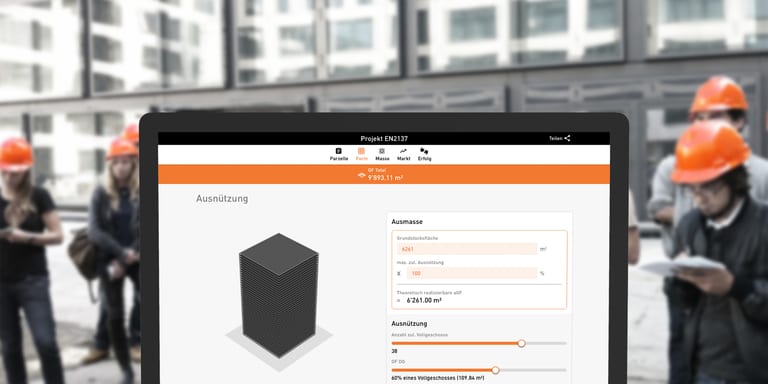The Chair of Architecture and Building Process at ETH's Department of Architecture required an understandable way of teaching students the economic mechanisms of real estate within six months. The solution: the ETH real estate economics app.
From the first sketch to the final solution
In the past, architecture students at ETH would calculate building costs and their economic ramifications using the “beer coaster” method. This fiddly method involves noting down your calculations around a coaster in order to reach a solution. This made the calculation process laborious, complex and time-consuming. A better solution was needed. As many students using the original method would create Excel manually, the focus was ultimately on creating a digitally optimised version of the existing templates.
The starting point for developing the app was an in-person workshop with all those involved. The first stage consisted of visualising all the calculations and forming an initial project plan. Data implementation began shortly afterwards, and it quickly became clear that the individual steps in the calculations would have to be marked well. This led to the idea of showcasing the calculations using addition/subtraction/multiplication/division. The framework helped to ensure all the relevant data was updated simultaneously, so users could see what is affected by what.
The first prototype had a slider with a bank and a piggy bank, and this was later also used in the final version. At either end of the slider are debt and equity financing. If more equity is used for financing, the piggy bank gets smaller, and the bank gets bigger. The objective set at the beginning of the project was to create an app that students could use in their exams, and this objective was achieved successfully.
The cornerstones of the app
The information architecture was tailored to users’ needs and heavily based on a user persona, which helped to ensure that users were guided through the app and given direct feedback - made possible by sensitive control elements and magnificent visualisation. The app’s illustrations were specifically tailored to Master’s students and lecturers in Architecture at ETH. For displaying results, clarity was the key focus. The app is visually aligned to the teaching materials, allowing a recognition effect. All calculations are animated and visually comprehensible, ensuring that connections within teaching modules are presented in an easy-to-understand way.

